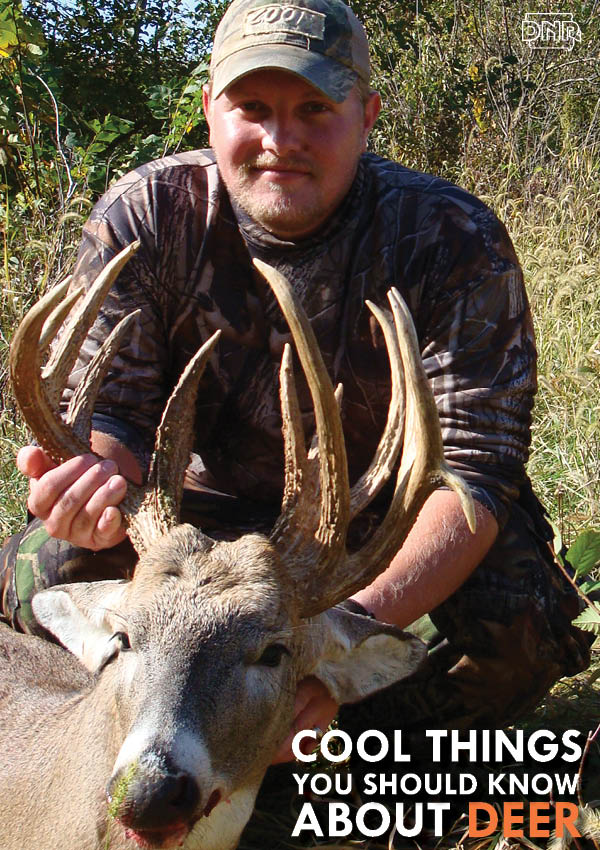 Even though the white-tailed deer is one of Iowa’s most well-known critters, here are some cool facts you may not know about deer:
Even though the white-tailed deer is one of Iowa’s most well-known critters, here are some cool facts you may not know about deer:
You can find white-tailed deer across the U.S., except for Nevada, Utah, California, Hawaii and Alaska. However, in those states you can still find the whitetail’s close relatives, the mule deer and black-tailed deer.
The antlers of a buck (a male deer) are the fastest growing tissue known in the world.
Antlers aren’t just for bucks – about one in 10,000 female deer, or does, can have antlers. One surprised Iowa hunter harvested a 12-point doe, fully capable of bearing fawns, back in 2008 (pictured at right).
These does have higher levels of testosterone, which allows them to grow antlers. However, on a doe, these antlers would be in velvet just as hunting seasons start in the fall, instead of the spring like males. If they do grow stronger antlers, they are usually spongy, but a rare few can have hardened antlers like the males.
Deer can have fangs, too. Another rarity for white-tailed deer is vestigial canine teeth – basically, fangs on the deer’s upper jaw. While all deer have canine teeth (the pointy ones) on their lower jaws, only about one in 10,000 have upper incisors.
White-tailed deer like to talk, but they use many different ways to communicate, including scent, body language and sounds. Pointing a tail upward signals “danger!” to other deer nearby.
A fawn’s spots are camouflage. While the white spots of a fawn may seem to make it stand out more to us, the spots actually resemble shadows on the forest floor, allowing them to blend in with their surroundings. Fawns are born in the spring, and about 70 percent of those young will then breed that fall.
It’s extremely rare for does to abandon their young. Each year, calls come in from around the state of baby wildlife, especially deer, seen on their own and thought to be abandoned by their mothers. Usually, the mother is nearby, watching you and her baby carefully. Mother deer will also leave their fawns to make a distraction to draw predators and attention away from their young, rejoining them when the danger has passed.
For more, check out our Iowa wildlife board on Pinterest.